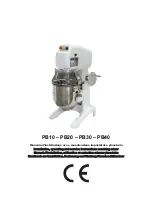
IV-l. INPUT ASSIGNMENTS
A. SUBMlXING MULTIPLE INSTRUMENTS.
The MM 12 has 12 inputs but only 8 monitor
mix level controls above each output master level. The reason for this is to simplify monitor
mixing by doing some clever sub-mixing on the inputs. Most groups possess at least one
individual who plays more than one instrument (albeit never at the same time...), such as a
keyboard player, drummer, lead guitarist with 4 axes, etc. In such a situation, plug one
instrument into channel 8, a second instrument into 8a, a third into 8b and so on. Then adjust
the INPUT CAIN controls on channels 8, 8a, 8b, and 8c of the MM 12 such that all of the
instruments are of equal volume when monitored in headphones with MlX LEVEL control 8
turned up (you will also have to turn up channel 1 OUTPUT LEVEL control and depress the
CUE button just below it). Now the #8 MIX LEVEL knobs in the 6 output columns will control
any of the four instruments in the #8 submix group.
If the above instrumentalist (drummer, keyboardist, etc. also sings, be sure to route the vocal
through input channel #7 (N0T 8, 8a, 8b or 8c so that you maintain separate control on the
monitor mixes from the instruments.
Use input channels 1 and 1a in a similar fashion for a single instrumentalist with two
instruments; remember to keep any vocal on a separate channel.
8. RE-ASSIGNING SUBMIXES.
Instead of using the standard 4-into-1 submix, you might
have a situation where you need three submixes of 2-into-1, say for three guitar players or brass
players each having two separate instruments. The MM 12 may easily be re-patched to
accommodate this or similar set-ups. Use inputs 8 and 8a for one pair of instruments. Then
using two mono shielded 1/4" patch cables, plug the LOOP of 8b into the AUX input of
channel 7; similarly connect the LOOP of 8c into the AUX input of channel 6. Now you have
three separate 2-into-1 submixes: 8/8a, 7/8b, and 6/8c. Now the mix level controls 6, 7 and 8
in the OUTPUT columns each control either of two instruments, whichever is being played at
the time.
IV-2. USING THE MM 12 OUTPUT MIX MATRIX
The MM 12 is laid out differently from traditional monitor mixer designs. By being ”output
oriented” rather than input oriented, its use is more natural and logical, and therefore less
confusing and easier to learn. In using the output mix level controls, think in terms of each
vertical column of knobs controlling the content of each of the monitor speakers on stage.
For example, the large MASTER LEVEL control of output channel #1 sets the overall volume in
#1 monitor speaker. The eight MIX LEVEL controls above it determine the specific mix of
vocals and instruments (from the MM 12 inputs) to be heard in monitor speaker #1.
Making quick adjustments is very straightforward:
if the person listening to monitor #3 wants
more of his/her own vocal, which is input channel 5, simply go column #3 and turn up mix level
control #5.
IV-3. USING ‘THE PARAMETRIC OUTPUT EQUALIZERS.
The primary intention of the parametric output EQ is to minimize feedback problems which
inherently plague monitor systems. Although versatile and economical, parametric equalizers
can be a little tricky to use properly if you are not familiar with them. The following procedure is
a recommended method for quickly reducing feedback problems without adversely affecting
monitor sound quality.
1. Start with only ONE output MASTER LEVEL control turned up, say channel #1, and all
others turned fully down.































